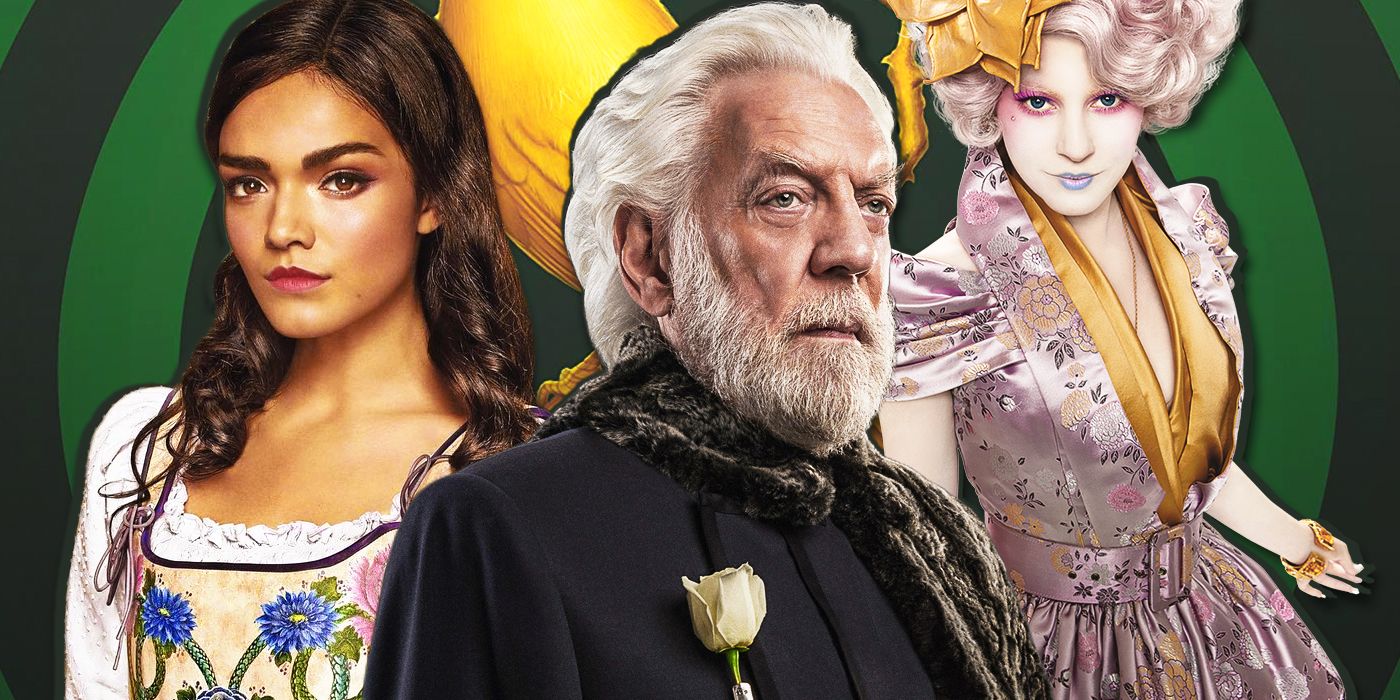10 Unforgettable Aspects the Hunger Games Films Outshine the Novels

The *Hunger Games* franchise has secured its place among the colossal behemoths of modern cinema, bringing Suzanne Collins' cherished novels to life – and who doesn't love a good dystopian outing? Still, every adaptation comes bundled with its own set of tweaks and changes that leave fans alternately nodding in approval or banging their heads against the wall. Yes, I’m looking at you, Madge Undersee – can we talk about the absence of that delightful character who could have added another layer? Oh, and let's not even start on those mutts; they were downright fluffy bunnies in comparison to their print counterparts.
This cinematic journey—from the initial *Hunger Games* to the latest prequel, *The Ballad of Songbirds and Snakes*—has made alterations that, while at times eyebrow-raising, have actually enriched the storyline. True, some decisions were likely dictated by a studio's need to keep the run time manageable and the rating suitable for teenagers (because, heaven forbid, we terrify our youth). Yet, there are others that invite us to peer deeper into the rich tapestry of relationships and characters who might otherwise remain mere footnotes in the print versions.
Let’s dwell on a minor detail that somehow evolved into a major talking point: the delicate dance of exemplary death scenes. In the books, Cato, that poor chap, gets the royal treatment—a prolonged mauling by wolfish mutts that seems almost divine in its cruelty. In the movies, they mercifully speed things up and tone down the gore, rationally considering the impressionable audience. And while some may cry out for authenticity—bring back the bloody spectacle!—the films cleverly navigate away from what could easily become a gratuitous gore fest. Remember, every sticky end, no matter how sanitized, still packs an emotional punch.
Then there’s Seneca Crane—what a strange little bird he is. The book would have you believe he barely registers on Katniss's radar until it’s too late. But in the adaptation, his demise becomes a cautionary tale against the brutal machinations of Panem’s power-hungry elite. Locked in that room with a bowl of nightlock berries, Crane’s choice is a harrowing metaphor, showcasing the illusion of power and the nauseating reality that he’s just another pawn in Snow’s twisted game.
Speaking of profoundly disturbing realizations, let's not gloss over the plight of the Career tributes. In a daringly ironic twist, both the movies offer them moments of tragic clarity before meeting their fates. Gone is Cato's buddy-buddy banter with Clove, but watching him realize he's just expendable fodder is heartbreakingly brilliant. Coral’s lament that she cannot have "killed them all for nothing" echoes a universal truth—survival in Panem is grotesquely transactional. They played the Capitol’s game but reaped nothing but death.
And let's not mention Tigris, who certainly wasn’t at the forefront of our imaginations during the reading. Who knew the former stylist had familial ties to the dreaded President Snow? Moviegoers get a tantalizing hint of her character evolution, allowing us to ponder when she actually turned against him—because, darling, that arc deserves its own prequel.
Amidst the backdrop of civil unrest portrayed in the films, we get a window to parts of Panem Katniss never set foot in. Audiences are treated to glimpses of riots, bombings, and other unspeakable chaos that underscore just how grand the rebellion really is—a fantastic narrative choice that expands both the stakes and the complexity of our heroine’s role. Because let's face it, Katniss could fill a stadium with her self-doubt.
Lucy Gray Baird’s triumph in the Tenth Hunger Games gains an ironic twist in the movies, shedding light on the machinations of human nature and survival instinct. In Collins' original tale, there's hardly a murmur of protest; in the cinematic version, the students’ riot to ensure her life becomes a delightful commentary on social activism and rebellion—the very essentials of a revolution.
But, one mustn't overlook the ever-debonair President Coin, whose gradual reveal as a calculating figure is as delightful as it is disturbing. In the films, her manicured transformation mirrors the predictable trajectory of political machinations—she starts off all rainbows and unicorns before unveiling a rather chilling ambition that would make even Snow squirm.
And oh, dear Plutarch Heavensbee! The book version leaves much to the imagination, but the adaptation has him strategically scheming alongside Snow, giving us that delicious thrill of espionage. For those uninitiated into the books, it’s a twist worthy of applause when Katniss learns of his true loyalties—leaving viewers to rewatch with a smug sense of satisfaction.
Finally, let’s not stand idly by as we discuss Effie Trinket. For those only acquainted with the film adaptations, it may come as a shock to learn that our esteemed escort barely figures into *Mockingjay*. However, her movie counterpart thrives throughout the adaptation’s narratives, seamlessly evolving from a mere sidekick into an invaluable ally, facilitating her own lush character growth and planting seeds of romance with Haymitch—a delightfully unexpected development.
As for President Snow, with each sly smile and chilling whisper, he becomes less of a shadowy figure and more of a lively antagonist we come to know intimately—thanks to Donald Sutherland’s brilliant portrayal. The movies do justice to his villainy, leaving viewers with the delicious thrill that comes with understanding the motives behind the madness.
In the end, adaptations are a fickle thing, often

